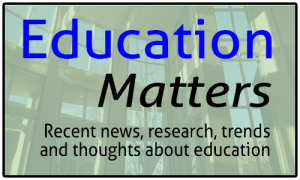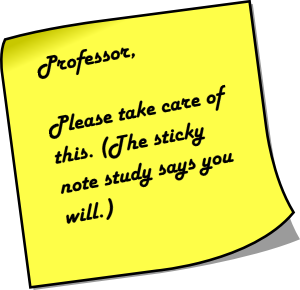True learning has little to do with memorization.
Benjamin Bloom explained that with enduring clarity 60-plus years ago. His six-tiered taxonomy places rote recall of facts at the bottom of a hierarchical order, with real learning taking place on higher tiers when students apply, analyze, synthesize, and create.
 Deep learning, project-based learning and a host of other high-impact approaches have provided evidence to back up Bloom’s thinking. A study from the Programme for International Student Assessment adds even more evidence. It found that students who memorized mathematics material performed worse than those who approached math as critical thinking, Jo Boaler writes for The Hechinger Report.
Deep learning, project-based learning and a host of other high-impact approaches have provided evidence to back up Bloom’s thinking. A study from the Programme for International Student Assessment adds even more evidence. It found that students who memorized mathematics material performed worse than those who approached math as critical thinking, Jo Boaler writes for The Hechinger Report.
Boaler, a professor at Stanford, says the United States has among the highest percentage of students who approach math as memorization. That’s not surprising, she says, because the teaching of math in the U.S. stresses memorization and speed of calculation for standardized tests. That not only narrows thinking, she says, but creates barriers to students who don’t learn well with memorization. Approaching math as problem solving, modeling, and reasoning expands thinking and expands math’s appeal to students.
“We don’t need students to calculate quickly in math,” Boaler writes. “We need students who can ask good questions, map out pathways, reason about complex solutions, set up models and communicate in different forms.”
That’s good advice for all disciplines.
 Need a professor to respond? Try a sticky note. Really.
Need a professor to respond? Try a sticky note. Really.
Experiments by Randy Garner of Sam Houston University found that professors are twice as likely to respond when a request is accompanied by a personal message on a sticky note, Harvard Business Review reports.
Writing for the Review, Kevin Hogan speculates on the reasons this approach works: It’s hard to ignore. It’s personal. And it creates a bit of neon clutter that the brain wants taken care of.
I’ve always considered duct tape a magic solution to most problems. Looks as if I’ll have to expand my toolkit.
Looking at K-12 as the key to raising college graduate rates
Michael J. Petrilli makes a good case that college graduation rates aren’t likely to improve significantly until students come to college better prepared.
Writing for the Thomas B. Forham Institute, he cites statistics showing that the percentage of “college prepared” students (35 percent in 2005) nearly matched the graduation rate of those students eight years later. He says that indicates that most students who are well-prepared for college eventually graduate.
“But until we start making significant progress at the K–12 level — and get many more students to the college-ready level before they land on campus — our dreams for significantly boosting the college completion numbers seem certain to be dashed,” Petrilli writes.
Briefly …
The percentage of students needing remedial math courses at Colorado colleges and universities has declined for three years in a row, Education News reports (There was a link, but the page no longer exist). Among students who started college in 2013, 34.2 percent needed remedial math, down from 40 percent in 2011. (Rates in other states vary widely.) … Eduardo Porter of The New York Times asks whether the federal government shouldn’t get a share of profits from federally financed research ventures in academia. He cites Tesla, Google, GPS, and touch-screen technology as examples of projects that emerged from taxpayer-supported research. … Google has made recordings of its Education on Air event available for viewing. One caveat: All the sessions have separate links but are part of a single video file of more than five hours. That makes skipping among the sessions a challenge.
Doug Ward is the associate director of the Center for Teaching Excellence and an associate professor of journalism. You can follow him on Twitter @kuediting.
Tagged active learning, Education Matters, research, student learning, learning strategies, strategies in math courses